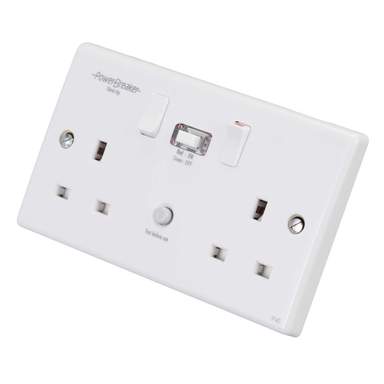To what extent can we rely on a type AC test with all loads on to detect this before we start? Or a DC clamp meter.
Two competing influences there: generate as much DC leakage as you can to test whether it is being desensitised, but at the same time generate more AC leakage to move it closer to the trip threshold and invalidate the results of the test as proof of its sensitivity.
What I'd like to see is a heat map of typical DC leakage sources under non-fault conditions, other that known high-risk loads such as EV charging. Most functional leakage is capacitive and inherently AC, whether at line frequency or inverter frequency. Obviously if the leakage doesn't occur without a fault, simply energising the existing loads doesn't quantify the risk of an existing type AC being blinded.
Then under fault conditions, leakage from the rectified non-isolated bus of SMPSUs and inverters is clearly a possibility e.g. if they get wet or damaged, but how often does it actually happen? Are there identifiable hotspots, perhaps class I integrated LED fixtures with non-isolated LED chips, or VSDs used outdoors, with a disproportionate risk of leaking DC at levels of interest?
Here's another idea: Put a big capacitor in series with every type A RCD

Some hairdryers won't then work on the low heat setting (which puts a diode in the mains lead) but that's a nasty trick anyway.
A diversionary side note:
Obviously we're used to the idea of rectifying the incoming AC mains to provide line-voltage DC within a device, and hence the idea that earth leakage from the rectified bus can be can be DC. What about deliberately drawing DC current from the AC mains by rectifying it asymmetrically? It was standard in the era of transformerless AC/DC valve radios and TVs, which took AC for the heaters but half-wave rectified the mains for the HT DC supply. But there were are talking about small loads, of arbitrary polarity, that cancelled out in bulk. In 60Hz countries, filament table lamps sometimes used a diode for a dim setting, as the resulting flicker of half the waveform being missing was less noticeable than with 50Hz. The hairdryer low setting is another.
In 1947, Strand Electric, the UK's premier manufacturer of theatre lighting equipment, tried to move forward from electromechanical dimmers to electronic ones using thyratrons. This had already been done by George Izenour in the US but the Strand guys, chiefly James Wood, came up with an idea to make the thyratrons easier to drive and the light flicker-free. Instead of a single-phase bridge, each lamp circuit was driven with a 3-phase, 3-pulse, controlled rectifier, passing moderately smooth DC through the lamp. Unfortunately being only half-wave meant the the mains supply current was pulsating DC also, and that that neutral current was the sum of the line currents, not the difference. Unlike a town full of radios and TVs this was a single point load of hundreds of kW pumping the full load current as DC into the neutral. I am not sure how they managed to overlook this during design and testing but the first installation cooked its supply cables and the concept was soon discontinued.






 Some hairdryers won't then work on the low heat setting (which puts a diode in the mains lead) but that's a nasty trick anyway.
Some hairdryers won't then work on the low heat setting (which puts a diode in the mains lead) but that's a nasty trick anyway.










